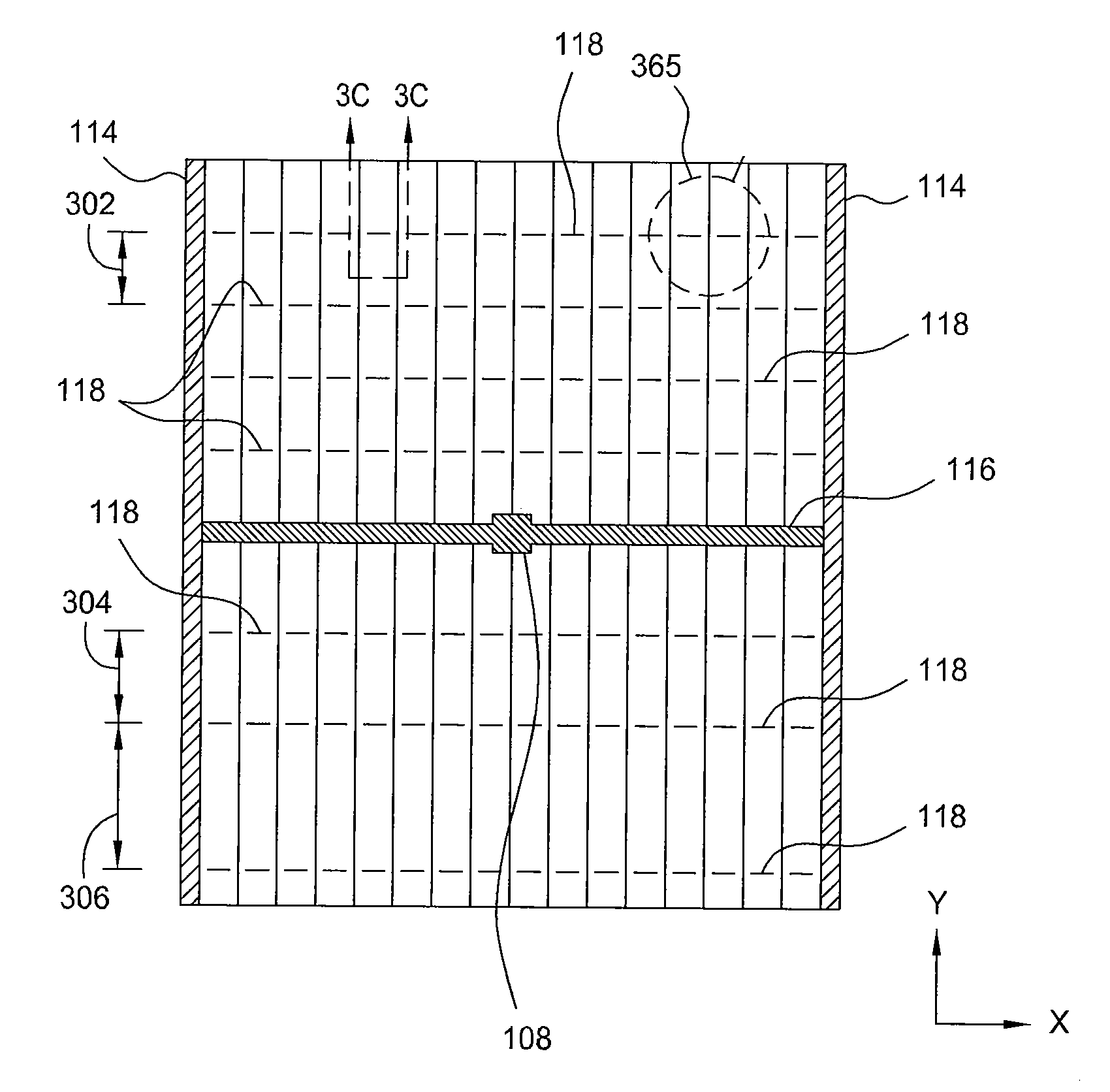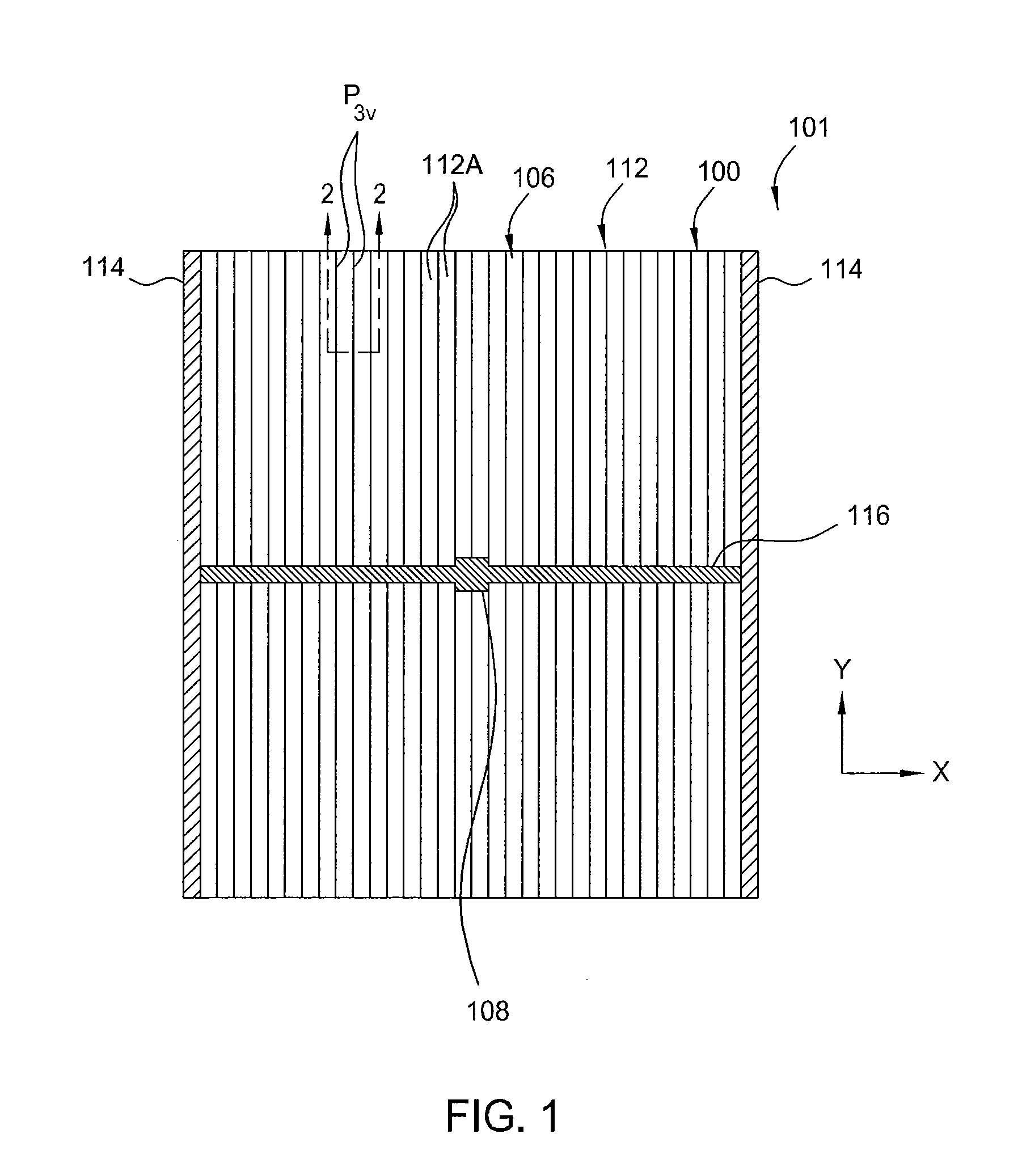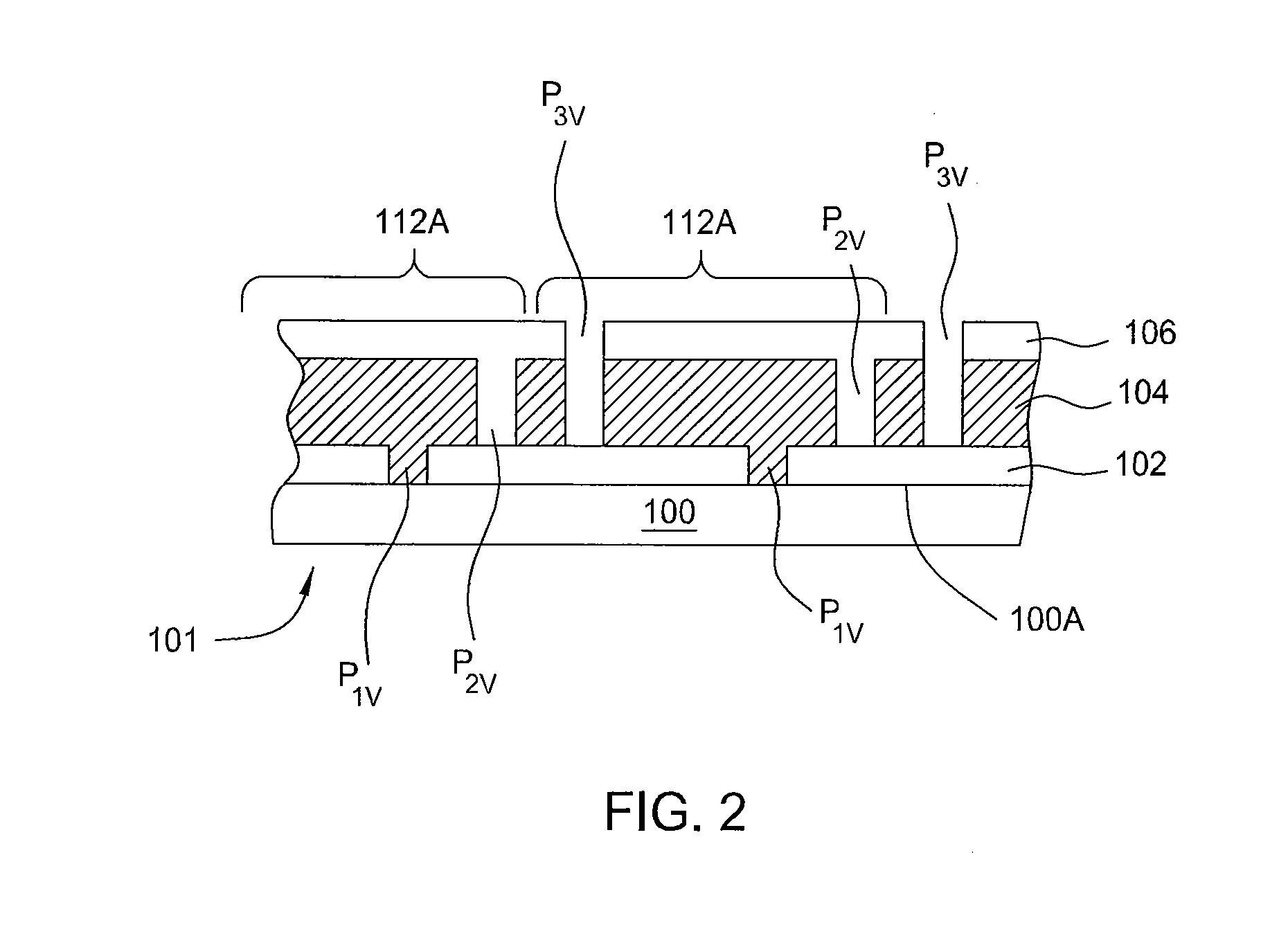Floating grid module design for thin film silicon solar cells
a solar cell and floating grid technology, applied in the field of solar cells, can solve the problems of increasing the average solar cell cost, increasing the cell width, and increasing the overall performance of the average solar cell, and achieve the effect of enhancing the current conduction of the tco layer
- Summary
- Abstract
- Description
- Claims
- Application Information
AI Technical Summary
Benefits of technology
Problems solved by technology
Method used
Image
Examples
Embodiment Construction
[0022]Embodiments of the present invention relate to the formation of discontinuous gridlines on, beneath or within a transparent conducting oxide (TCO) layer to obtain tunable module voltage and current for thin film photovoltaic devices. The discontinuous gridlines advantageously reduces the effective sheet resistivity of the TCO layer while improving the current conduction of the TCO layer, enabling the use of wider cells to decrease active area loss on the light incident surface while reducing operating voltage almost by half and increasing the operating current without loss in efficiency. Wider solar cells also reduce the number of laser scribes lines that would otherwise required to isolate individual cells from each other when formed with the current standard cell width. With different configurations of the gridlines as discussed below, the module voltage and current of the device are tunable to meet any module performance requirements.
[0023]FIG. 1 depicts a plain view of a s...
PUM
 Login to View More
Login to View More Abstract
Description
Claims
Application Information
 Login to View More
Login to View More - R&D
- Intellectual Property
- Life Sciences
- Materials
- Tech Scout
- Unparalleled Data Quality
- Higher Quality Content
- 60% Fewer Hallucinations
Browse by: Latest US Patents, China's latest patents, Technical Efficacy Thesaurus, Application Domain, Technology Topic, Popular Technical Reports.
© 2025 PatSnap. All rights reserved.Legal|Privacy policy|Modern Slavery Act Transparency Statement|Sitemap|About US| Contact US: help@patsnap.com



